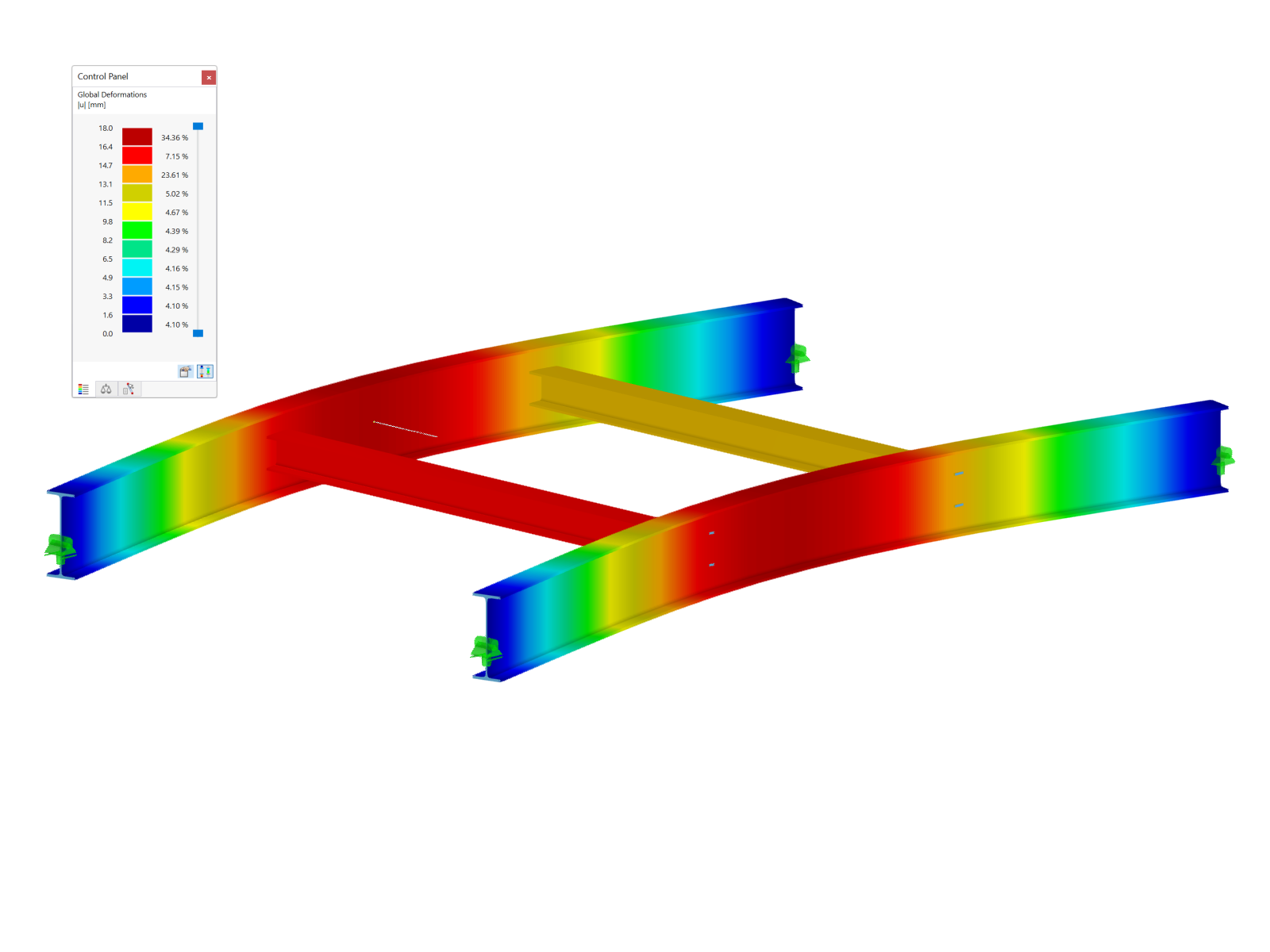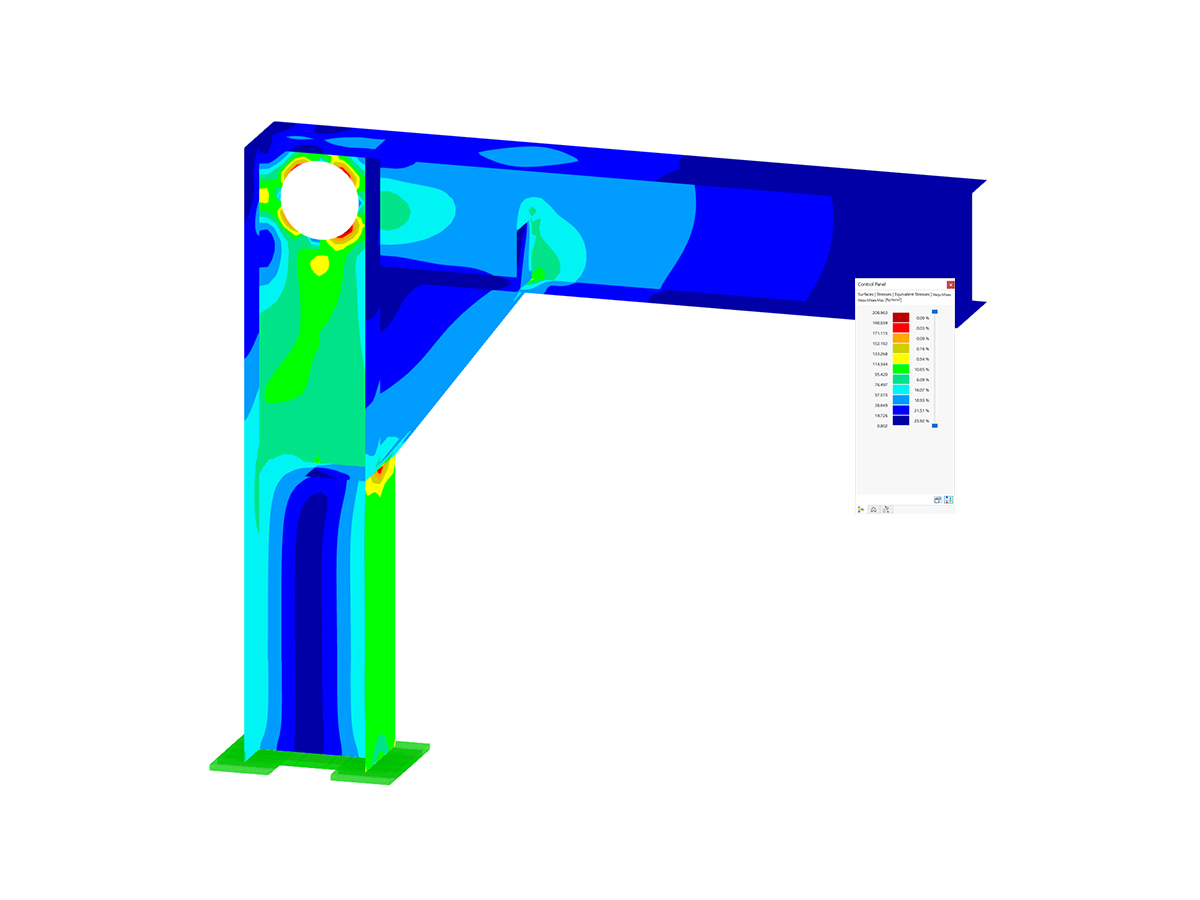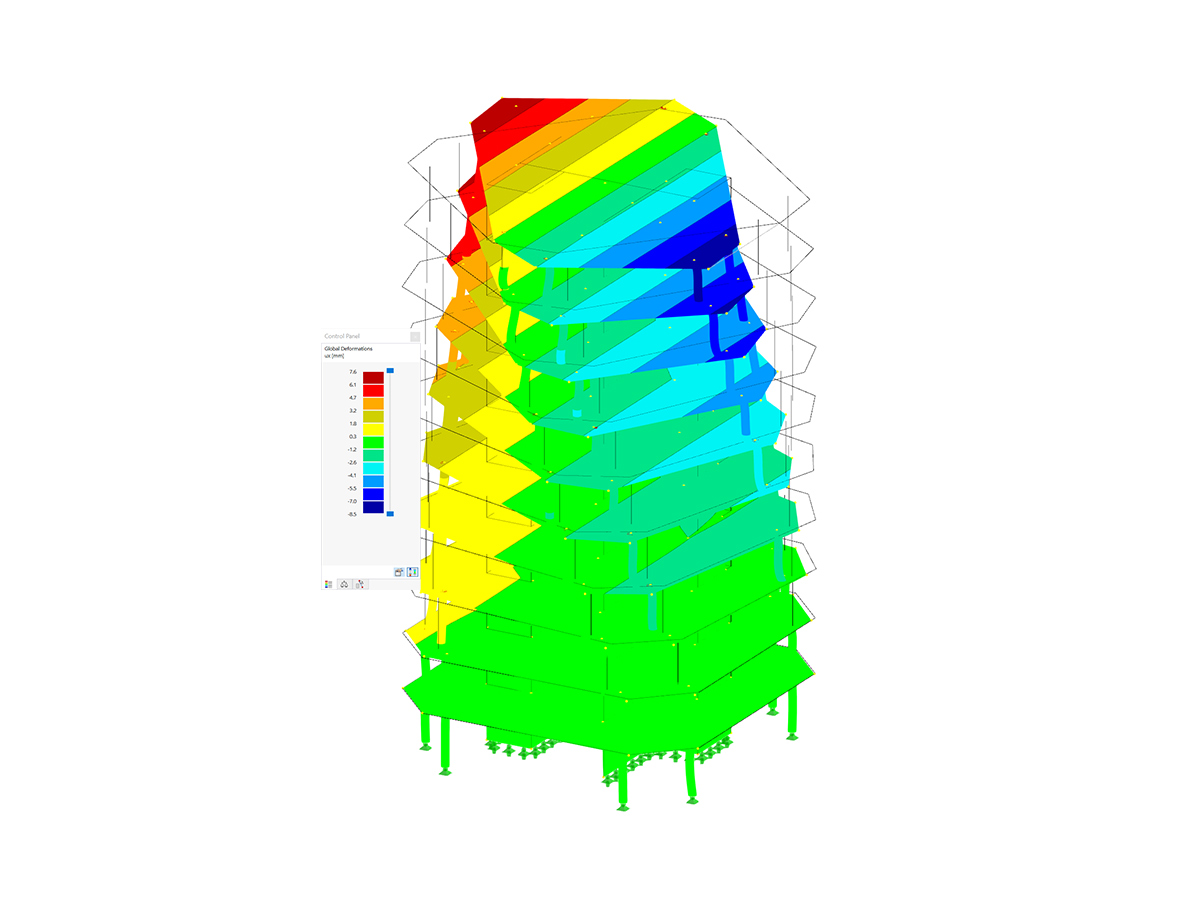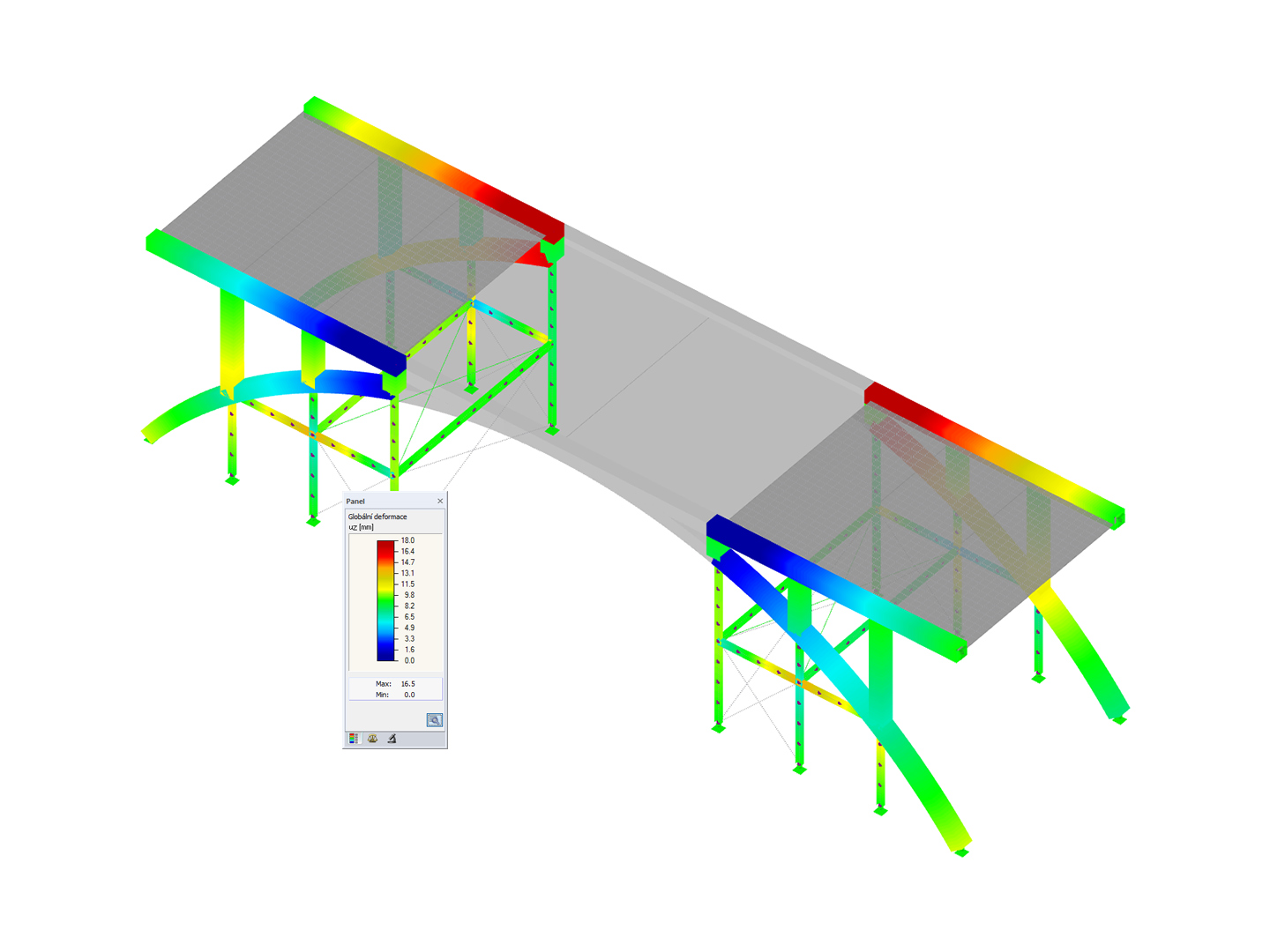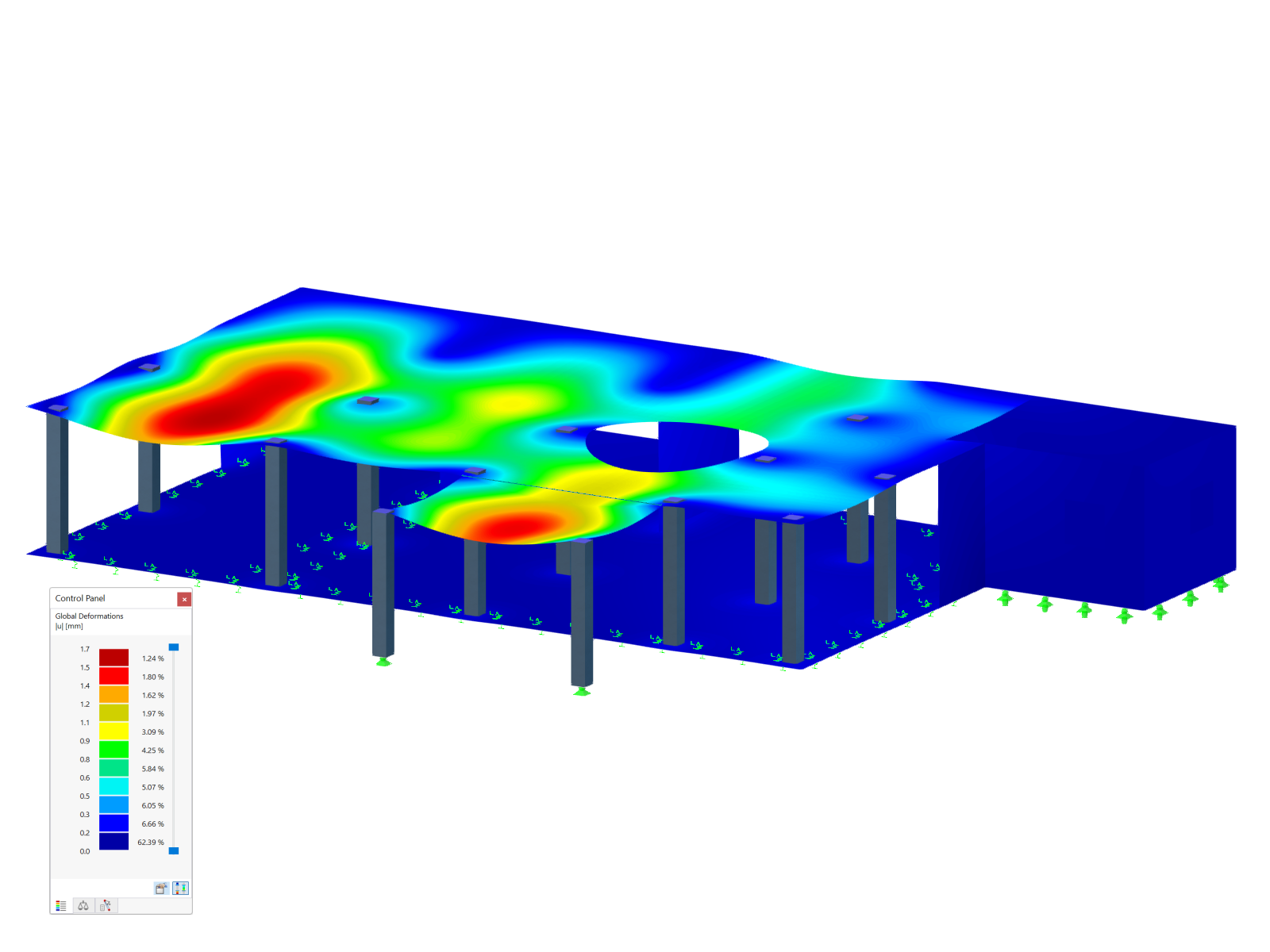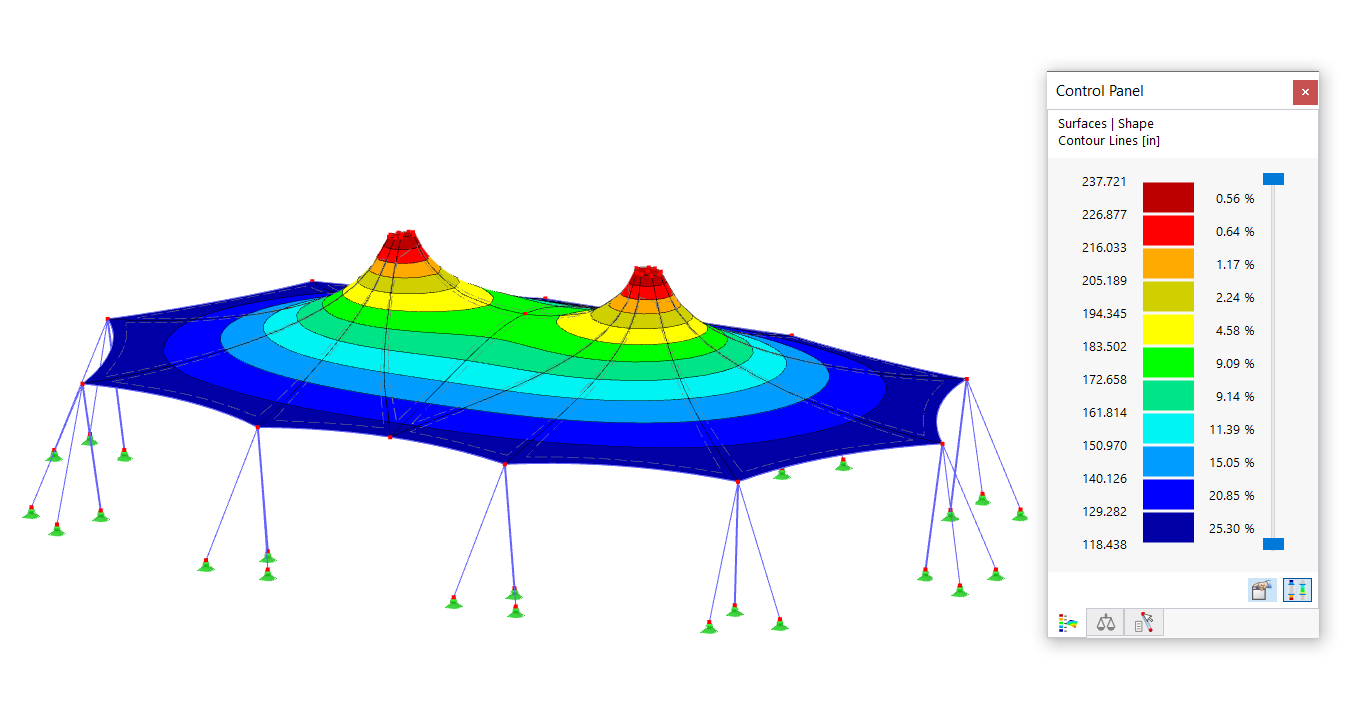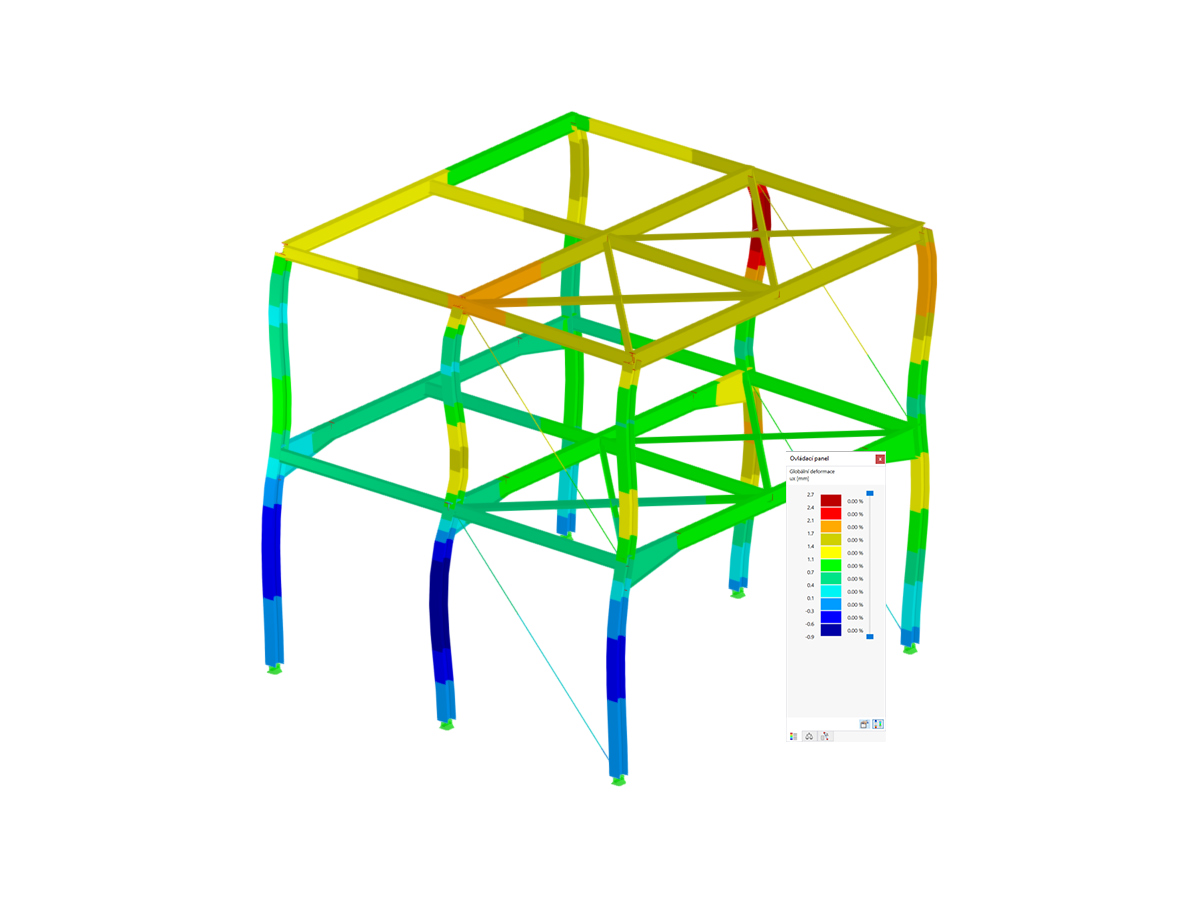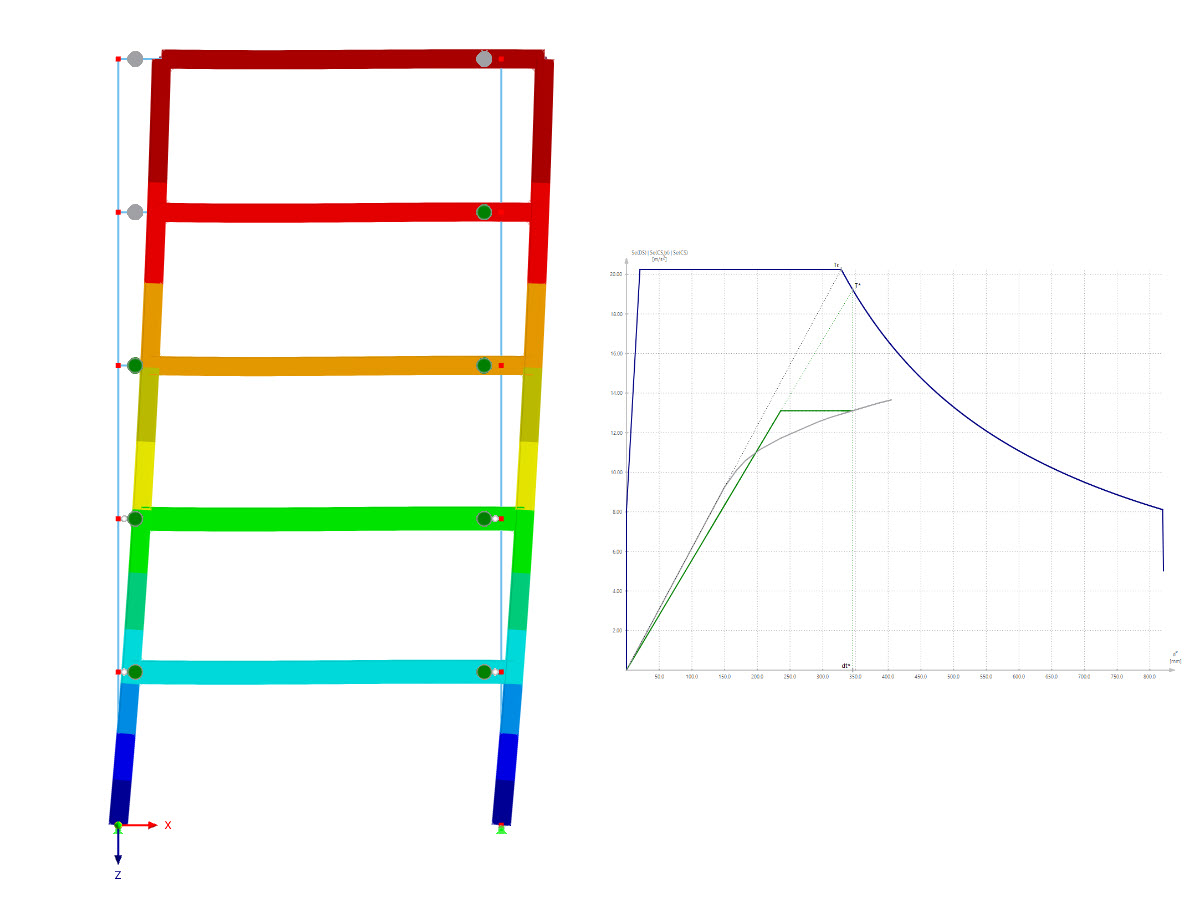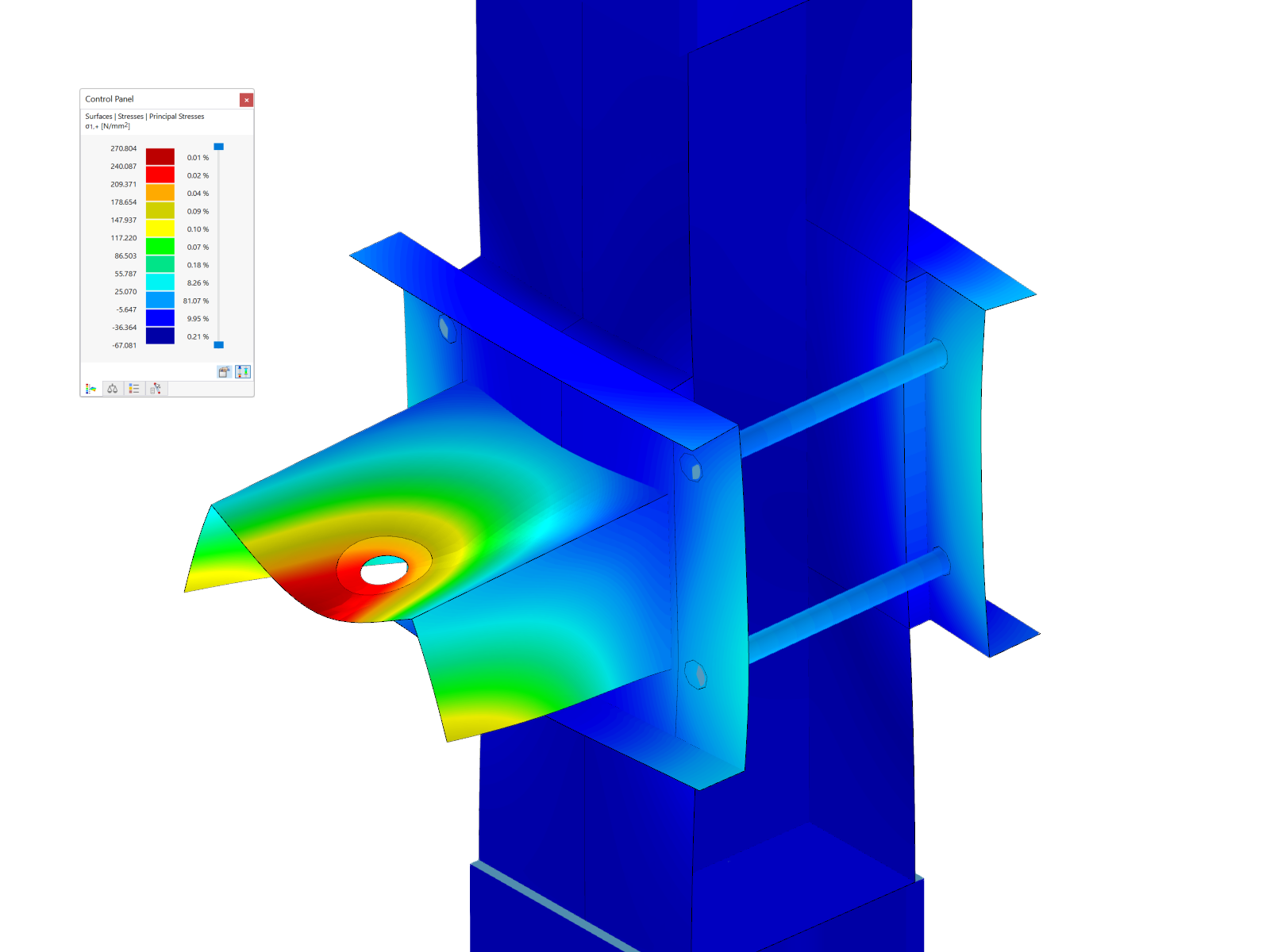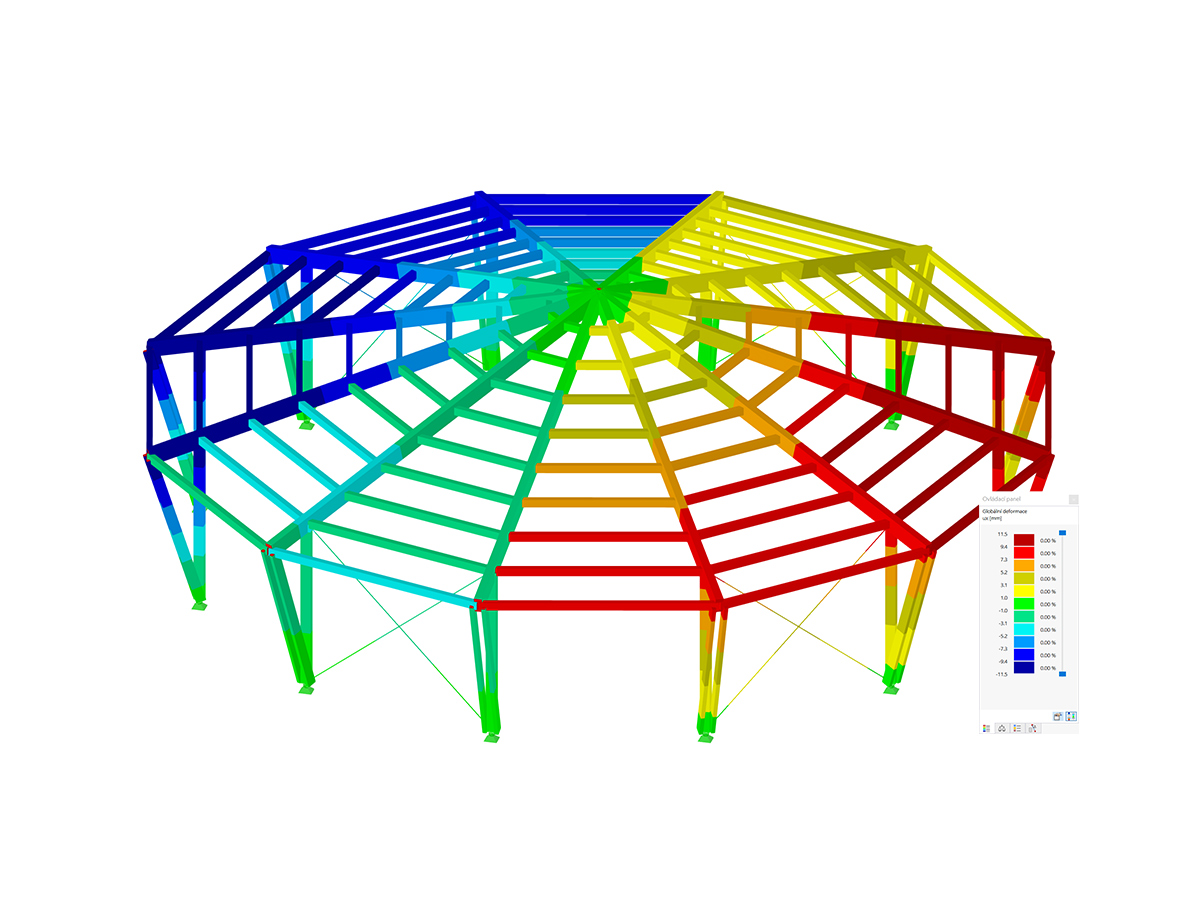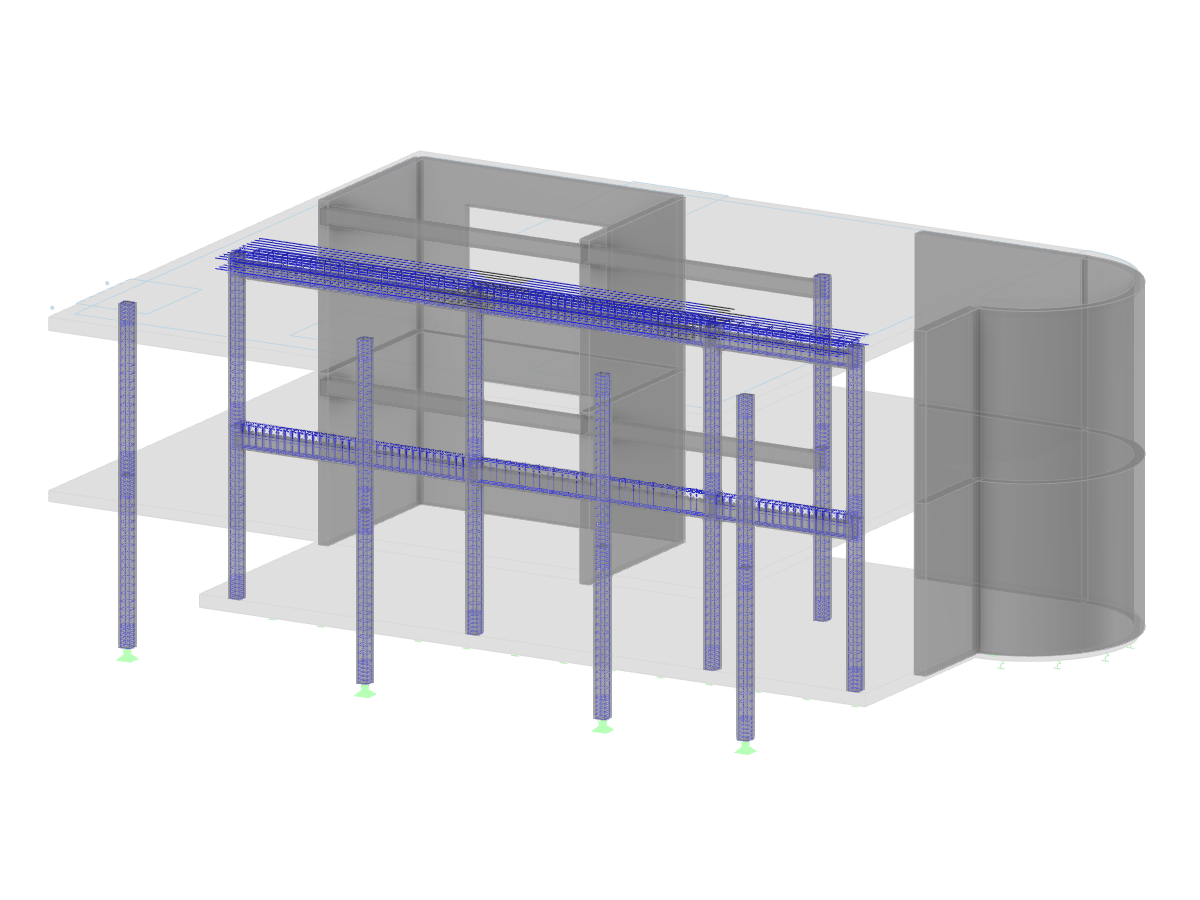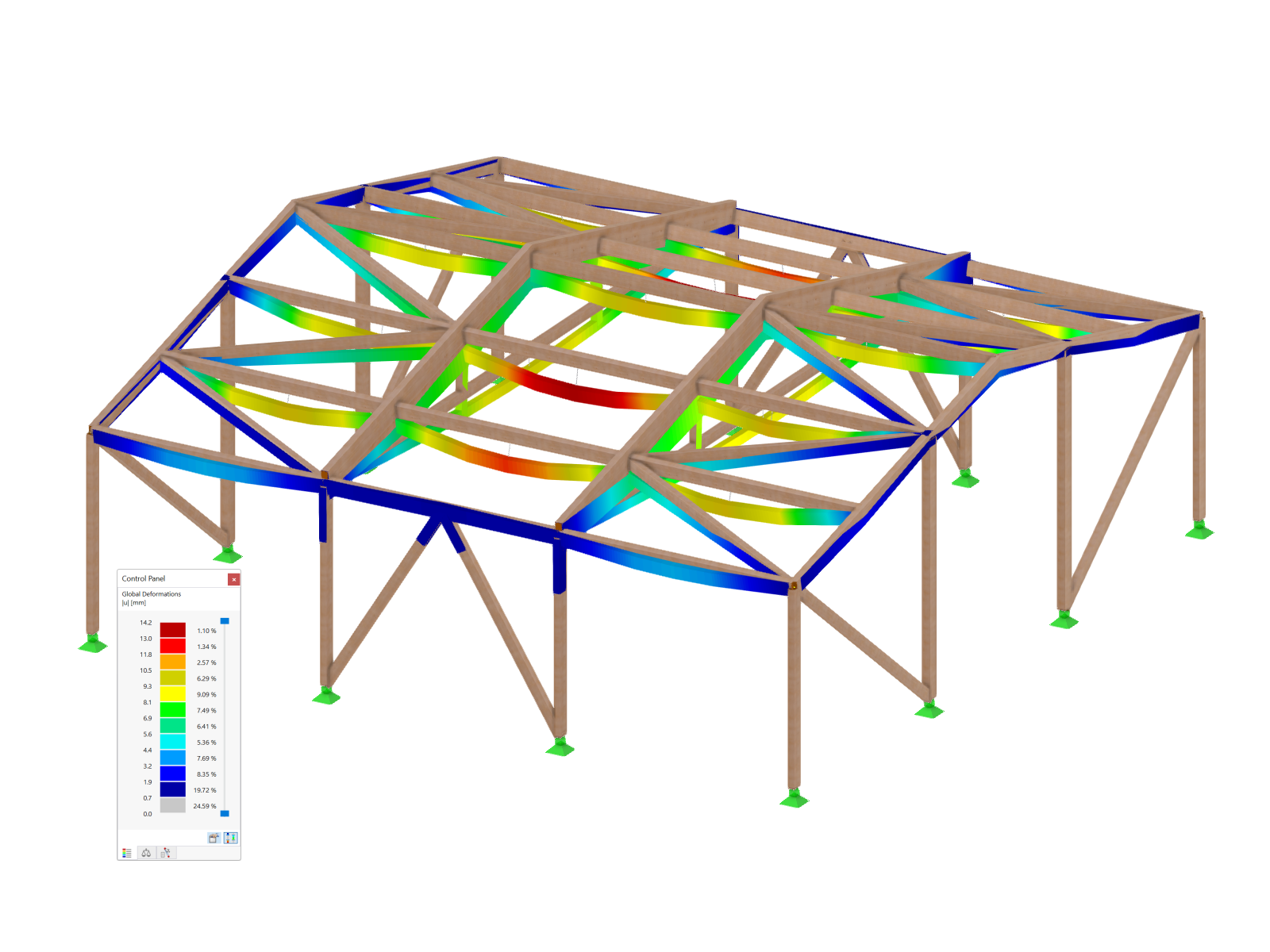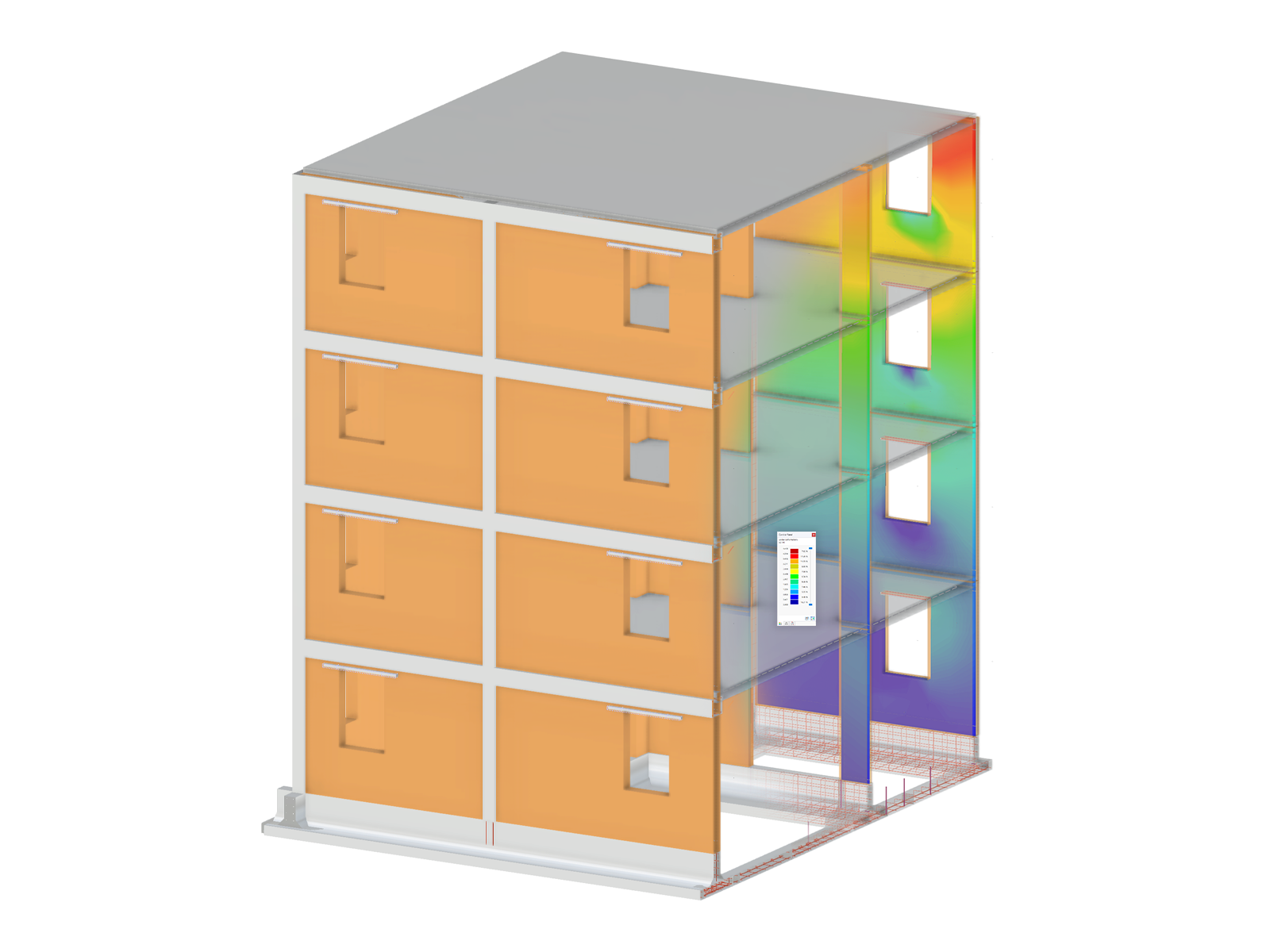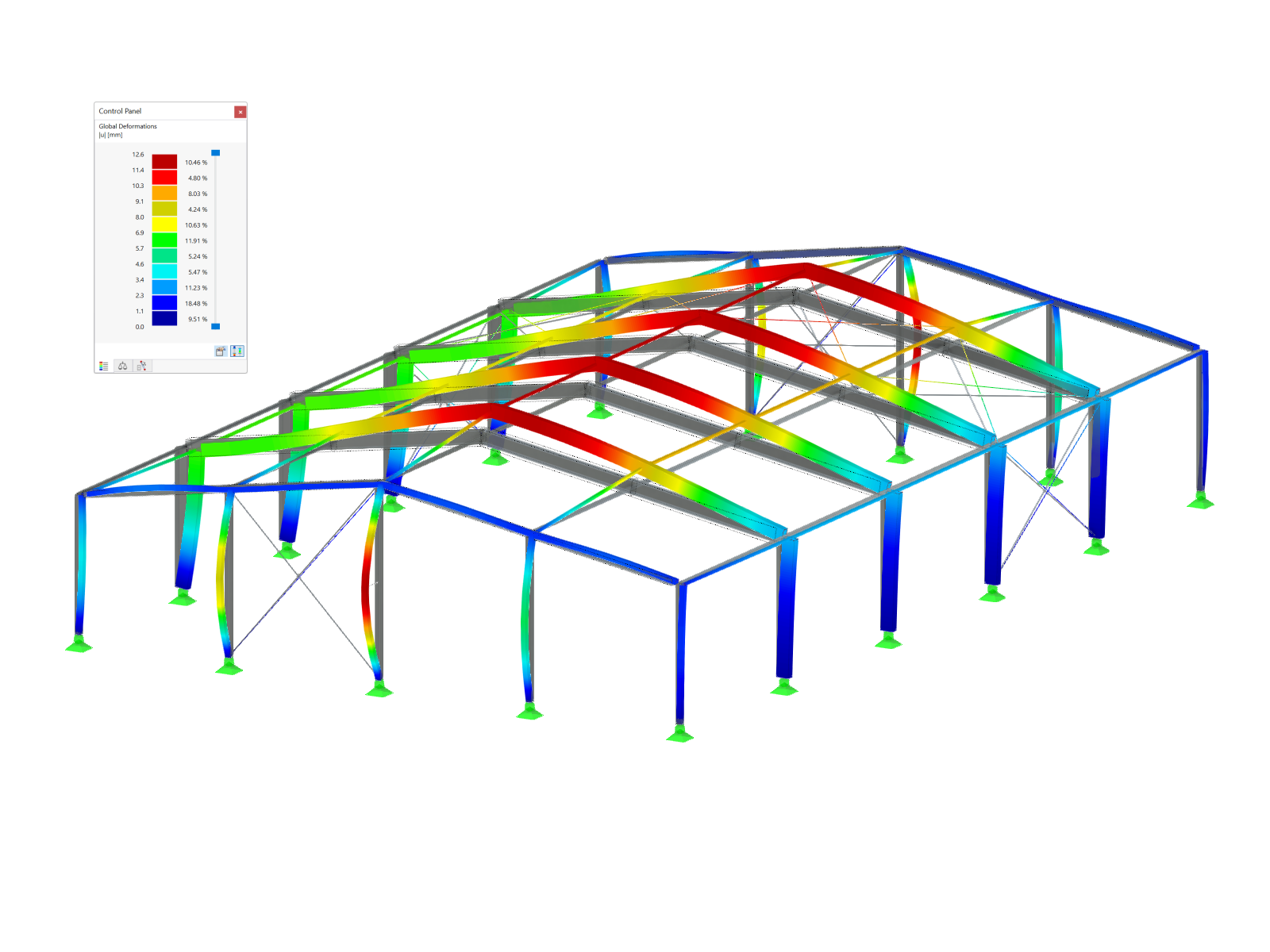In the Steel Joint add-on, you can arrange plates in various geometrical shapes. In addition to the "Rectangle" and "Circle" shapes, the "Polygon" shape is also available. The polygonal shape is defined by entering the point coordinates.
"Plate" Component with Polygonal Geometrical Shape





In the Snow Load Wizard, you can optionally consider snow overhang and snow guard when generating snow loads according to Eurocode.

The Construction Stages Analysis (CSA) add-on allows you to modify the object and design properties of members, surfaces, and so on, in the individual construction stages.

In the wind simulation, it is possible to consider member coatings (for example, from ice loads).

If you activate the "Link to Nearby Objects…" option for nodes, RFEM or RSTAB automatically searches for neighboring objects. A link in the form of a rigid member is then created for these members, nodes, or surfaces.
You can specify various settings for searching for nearby objects. Including search area, object types to be searched for, and objects to be excluded. Furthermore, you can specify member hinges for the created connecting member.
How can I calculate and read effective lengths of a member properly?
How can I find out which graphics card is actually used by RFEM 6?
I'm experiencing problems with the graphics card. What can I do?
Can I use the Dlubal API in Rhino and Grasshopper?
In the Steel Joints add-on, I get high utilization ratios for preloaded bolts in the tension design. Where do these high utilization ratios come from and how can I evaluate the load-bearing reserves of the bolt?
How can I transfer my model from ETABS to RFEM 6?














































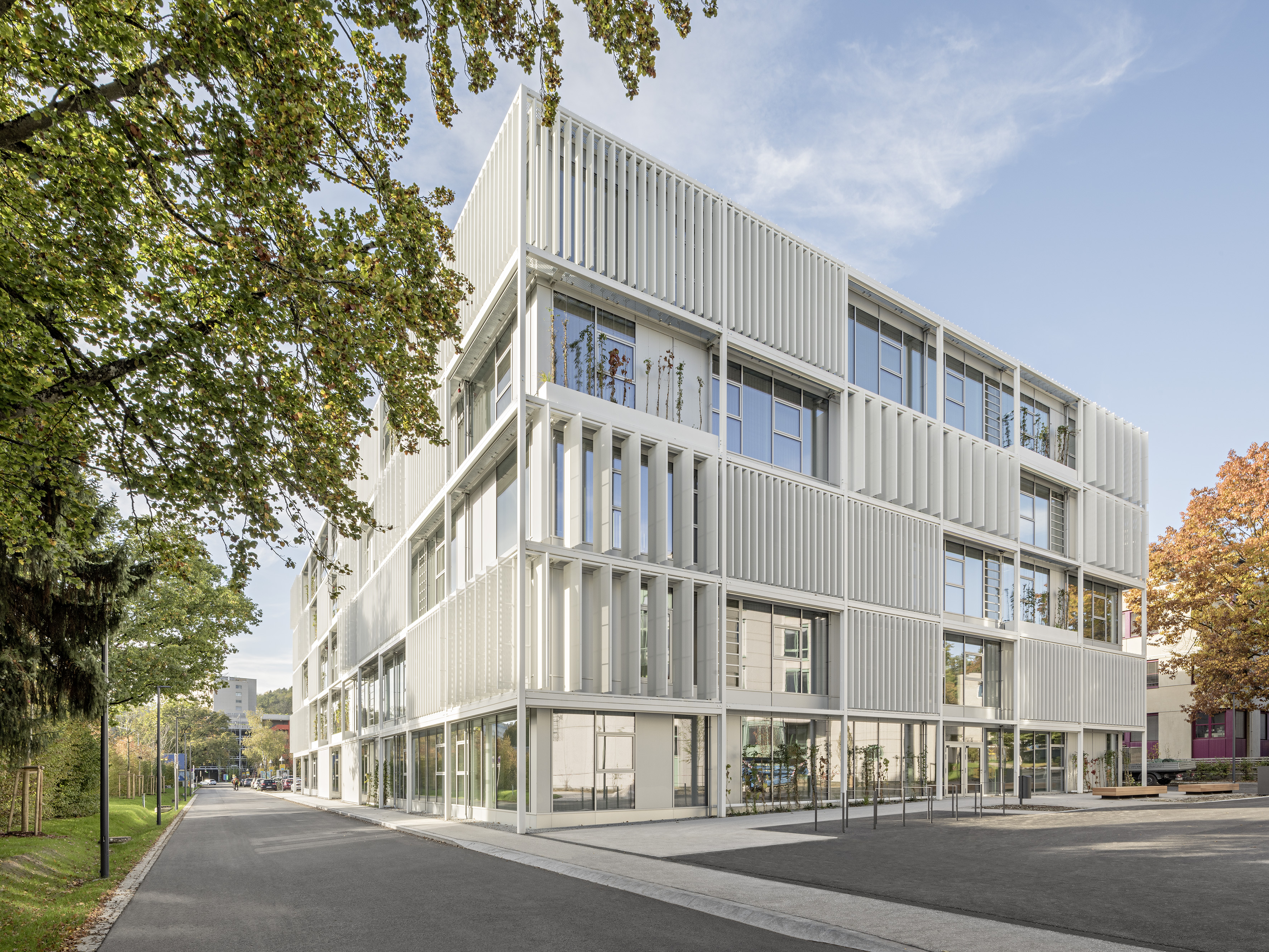-querkraft-hertha-hurnaus.jpg?mw=350&hash=3306957537863c7a7dc17160e2ced5806b35a7fb)







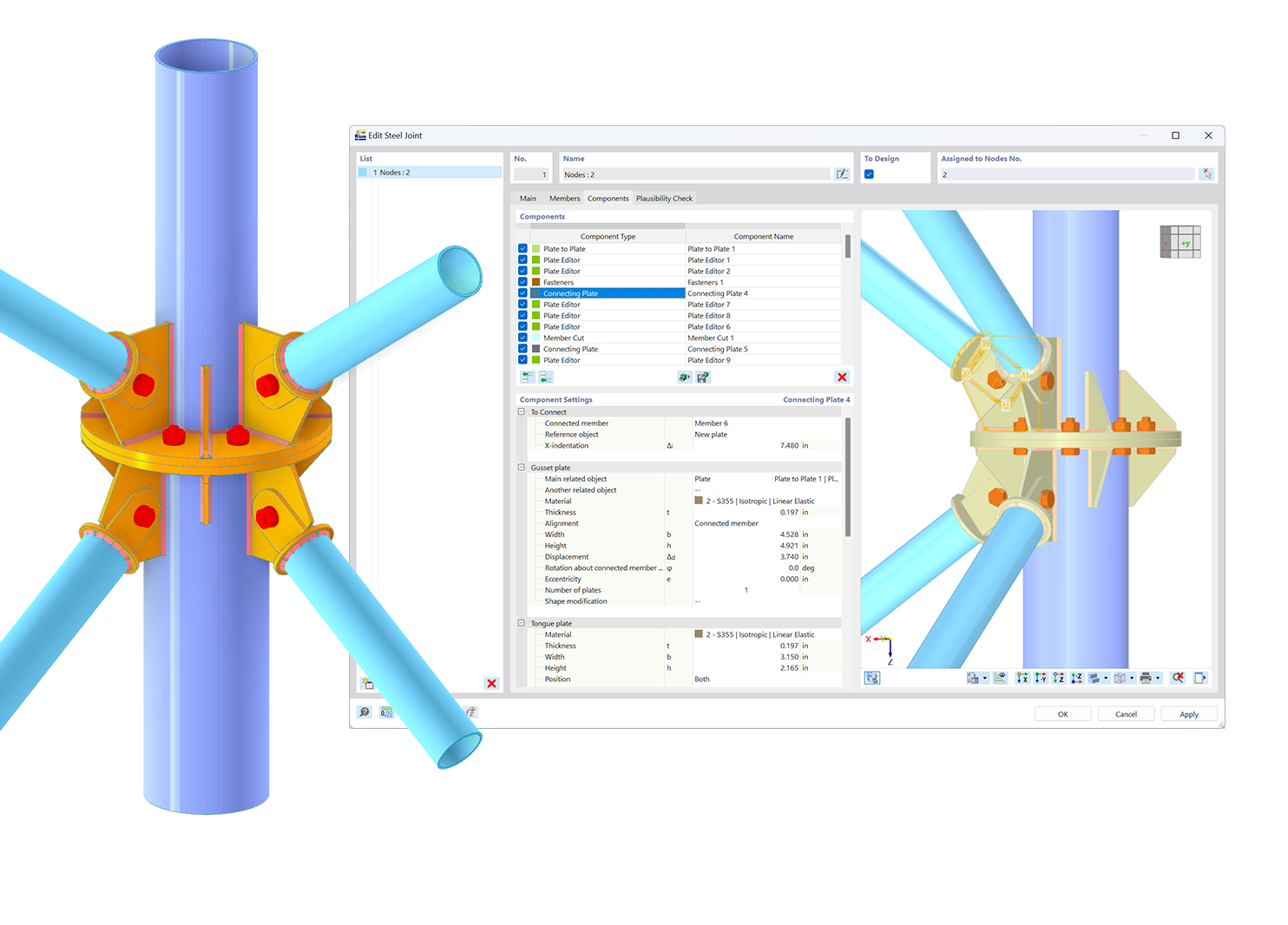.png?mw=600&hash=49b6a289915d28aa461360f7308b092631b1446e)
